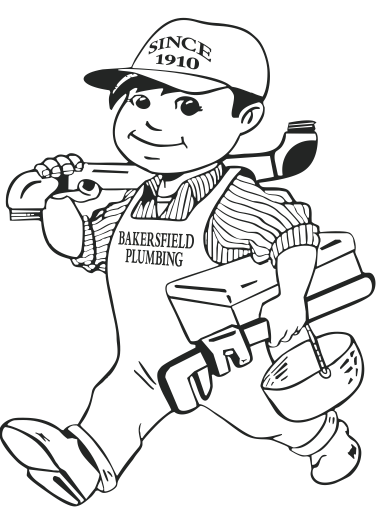When you turn on a faucet, flush a toilet, or take a shower, you’re relying on your home’s plumbing system. But how does this intricate system actually work? At Bakersfield Plumbing Company, with over 110 years of serving the Bakersfield community, we believe that understanding your home’s plumbing can help you maintain it better and identify issues before they become major problems. Let’s dive into the details of how plumbing works in a house.
The Basics of Residential Plumbing
A home’s plumbing system is a complex network designed to bring in clean water and remove wastewater efficiently. It consists of two subsystems: the water supply system and the drainage system.
1. The Water Supply System
The water supply system delivers fresh water to your home. This system operates under pressure and includes:
- Water Supply Lines: These are pipes that carry water from the municipal water supply or a private well into your home. Typically made from copper, PEX, or PVC, these pipes run throughout your house, delivering water to faucets, showers, toilets, and appliances.
- Shut-off Valves: Located at various points in the system, shut-off valves allow you to stop the flow of water to specific areas without shutting off the entire house’s supply. These are crucial during repairs or emergencies.
- Fixtures and Faucets: These are the endpoints of your water supply system, where you access water for drinking, cooking, cleaning, and bathing. Each fixture usually has its own shut-off valve.
- Water Heater: This appliance heats water for bathing, cooking, and cleaning. The water heater has its own cold water supply line and hot water output line that distributes hot water throughout the house.
2. The Drainage System
The drainage system removes wastewater from your home and ensures it is safely carried away to either a municipal sewer system or a septic tank. This system relies on gravity to move water through pipes and includes:
- Drain Pipes: These pipes collect wastewater from sinks, toilets, showers, and appliances. Common materials for drain pipes include PVC and ABS.
- Traps: Each fixture in your home has a trap, usually a P-shaped pipe that holds a small amount of water. This water acts as a barrier, preventing sewer gases from entering your home.
- Vent Pipes: Vent pipes are essential for allowing air into the drainage system, which helps wastewater flow smoothly and prevents suction that could empty the traps.
- Main Sewer Line: All drain pipes in your house converge into the main sewer line, which carries wastewater out of your home to the municipal sewer system or septic tank.
How Water Flows Through Your Home
Understanding the flow of water through your home can help you pinpoint where issues might arise.
- Supply and Delivery: Water enters your home under pressure through the main water line. It passes through a meter that measures your water usage and then branches off into smaller pipes leading to various fixtures and appliances.
- Heating: Cold water flows into your water heater, where it is heated and then distributed through the hot water lines to your fixtures.
- Usage: You use water at faucets, showers, toilets, and appliances. When you turn on a faucet, the water supply system delivers water at the desired temperature and pressure.
- Drainage: After use, the wastewater flows through drain pipes, passing through traps and vent pipes to prevent clogs and sewer gases from entering your home. The wastewater then travels through the main sewer line out of your house.
Common Plumbing Issues and Maintenance Tips
Knowing how your plumbing works can help you address common issues and maintain your system effectively:
- Leaks: Look for water stains on walls or ceilings, a sign of a leak in the supply lines. Regularly inspect pipes and fixtures for any signs of wear or corrosion.
- Clogs: Prevent clogs by avoiding pouring grease down the drain and using drain screens to catch hair and debris. If a clog occurs, try using a plunger or a drain snake before resorting to chemical drain cleaners.
- Water Pressure Problems: Low water pressure can result from leaks, sediment buildup in pipes, or issues with the municipal supply. Regular maintenance of your water heater and pipes can help maintain optimal pressure.
- Water Heater Maintenance: Drain your water heater annually to remove sediment buildup. Check the pressure relief valve to ensure it’s functioning correctly.
When to Call a Professional
While some plumbing issues can be handled with DIY solutions, others require professional expertise. Call a professional plumber if you encounter:
- Persistent leaks or clogs
- Low water pressure throughout the house
- Water heater issues, such as no hot water or strange noises
- Sewer line problems, indicated by multiple drain clogs or foul odors
At Bakersfield Plumbing Company, we’re here to help with all your plumbing needs. Whether you’re dealing with a minor issue or a major emergency, our experienced team is ready to provide reliable and professional service. Contact us today for expert plumbing services in Bakersfield!
We hope this guide helps you better understand your home’s plumbing system. For any plumbing concerns or maintenance needs, don’t hesitate to reach out to Bakersfield Plumbing Company. The best plumbers in Bakersfield, CA. We’ve been proudly serving Kern County since 1910, and we look forward to serving you too!
